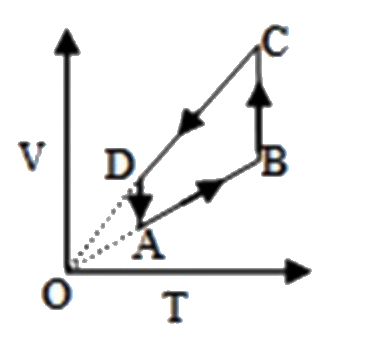A gas take part in two thermal processes in which it is heated from the same initial state to the same final temperature. The processes are shown on the P−V diagram by straight lines 1→3 and 1→2
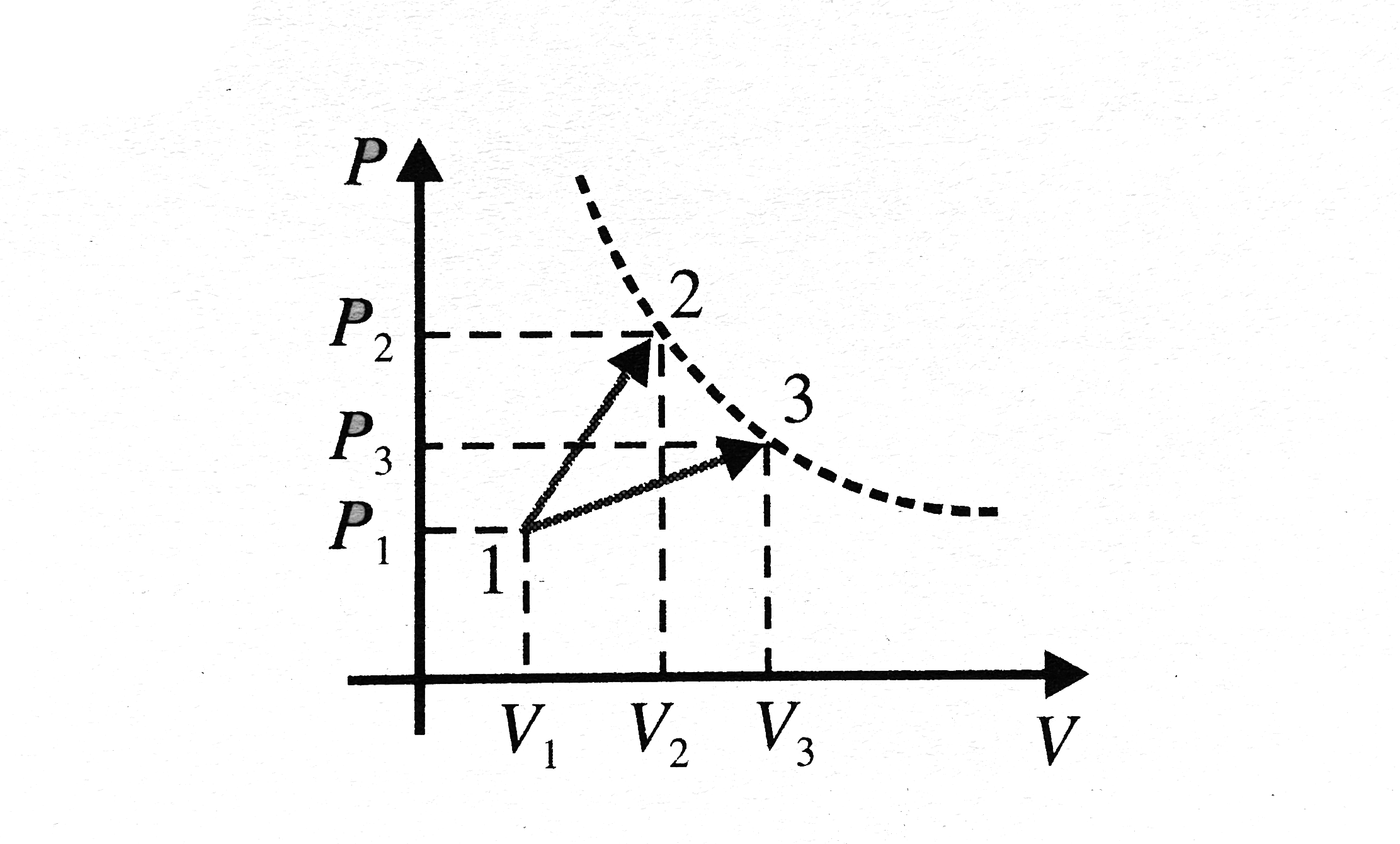
W13>W12
W12>W13
W13=W12
None of above
The correct Answer is:A
Since the temperature remains constant,
ΔT=0
Now
W12=12(P1+P2)(V2−V1)
W13=12(P1+P3)(V3−V1)
W12−W13=12[P1(V2−V3)+(P3−P1)]<0
W13>W12,Q13>Q12
Topper's Solved these Questions
- BOOK - CENGAGE PHYSICSCHAPTER - KINETIC THEORY OF GASES AND FIRST LAW OF THERMODYNAMICSEXERCISE - Interger11videos
KINETIC THEORY OF GASES AND FIRST LAW OF THERMODYNAMICS
- BOOK - CENGAGE PHYSICSCHAPTER - KINETIC THEORY OF GASES AND FIRST LAW OF THERMODYNAMICSEXERCISE - Assertion-Reasoning6videos
KINETIC THEORY OF GASES AND FIRST LAW OF THERMODYNAMICS
- BOOK - CENGAGE PHYSICSCHAPTER - KINETIC THEORY OF GASESEXERCISE - Compression2videos
KINETIC THEORY OF GASES
- BOOK - CENGAGE PHYSICSCHAPTER - LINEAR AND ANGULAR SIMPLE HARMONIC MOTIONEXERCISE - Multiple Correct Answer Type9videos
LINEAR AND ANGULAR SIMPLE HARMONIC MOTION
Similar Questions
Knowledge Check
- Question 1 - Select One
A gas takes part in two processes in which it is heated from the same initial state 1 to the same final temperature. The processes are shown on the p-V diagram by the straight lines 1-3 and 1-2. 2 and 3 are the points on the same isothermal curve. Q1 and Q2 are the heat transfer along the two processes. Then,
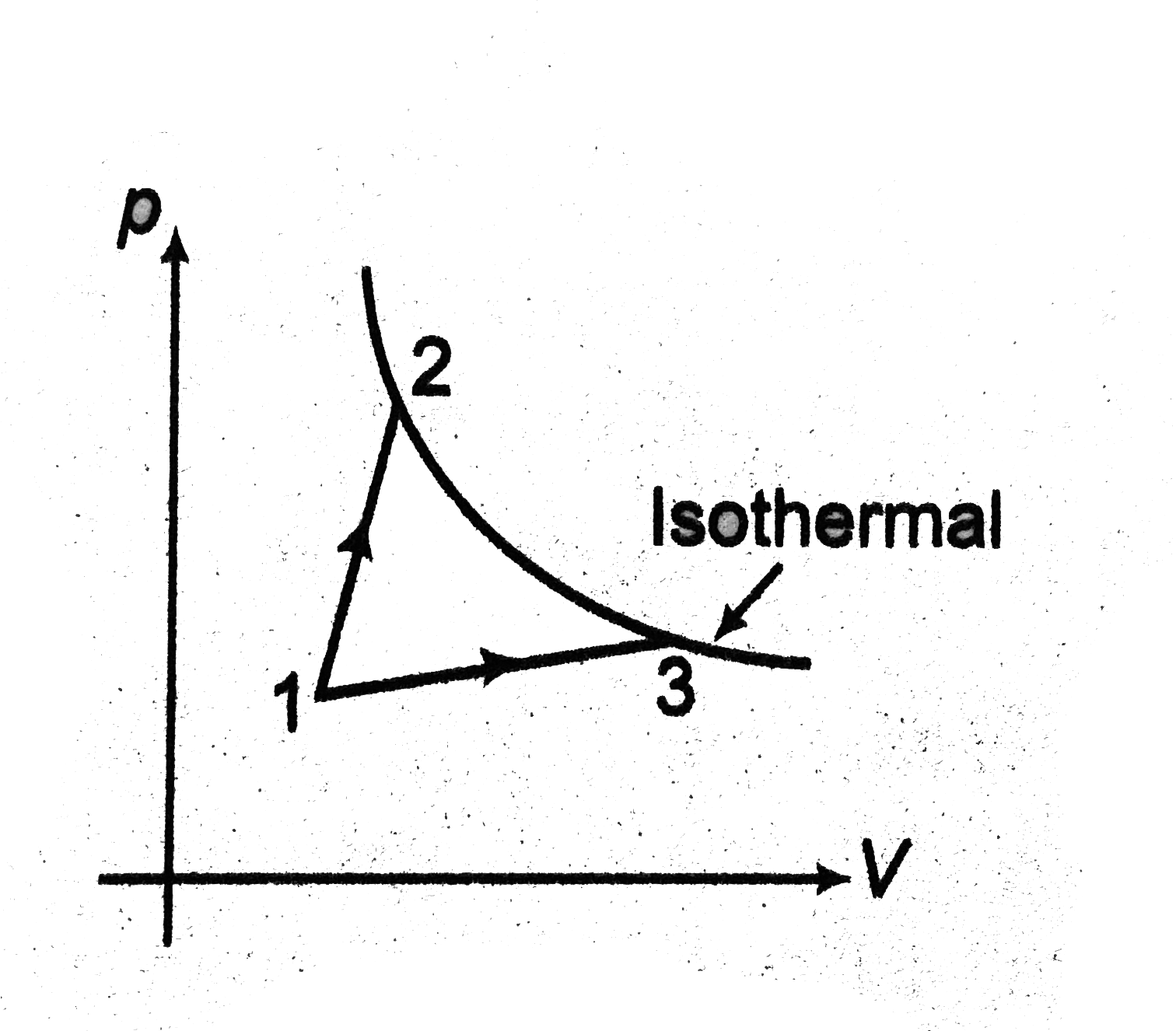 AQ1=Q2BQ1<Q2CQ1>Q2DInsufficient data
AQ1=Q2BQ1<Q2CQ1>Q2DInsufficient data - Question 2 - Select One
An ideal gas is subjected to two different process in which it is heated to same final temperature from same initial state (A) as shown in diagram, then :
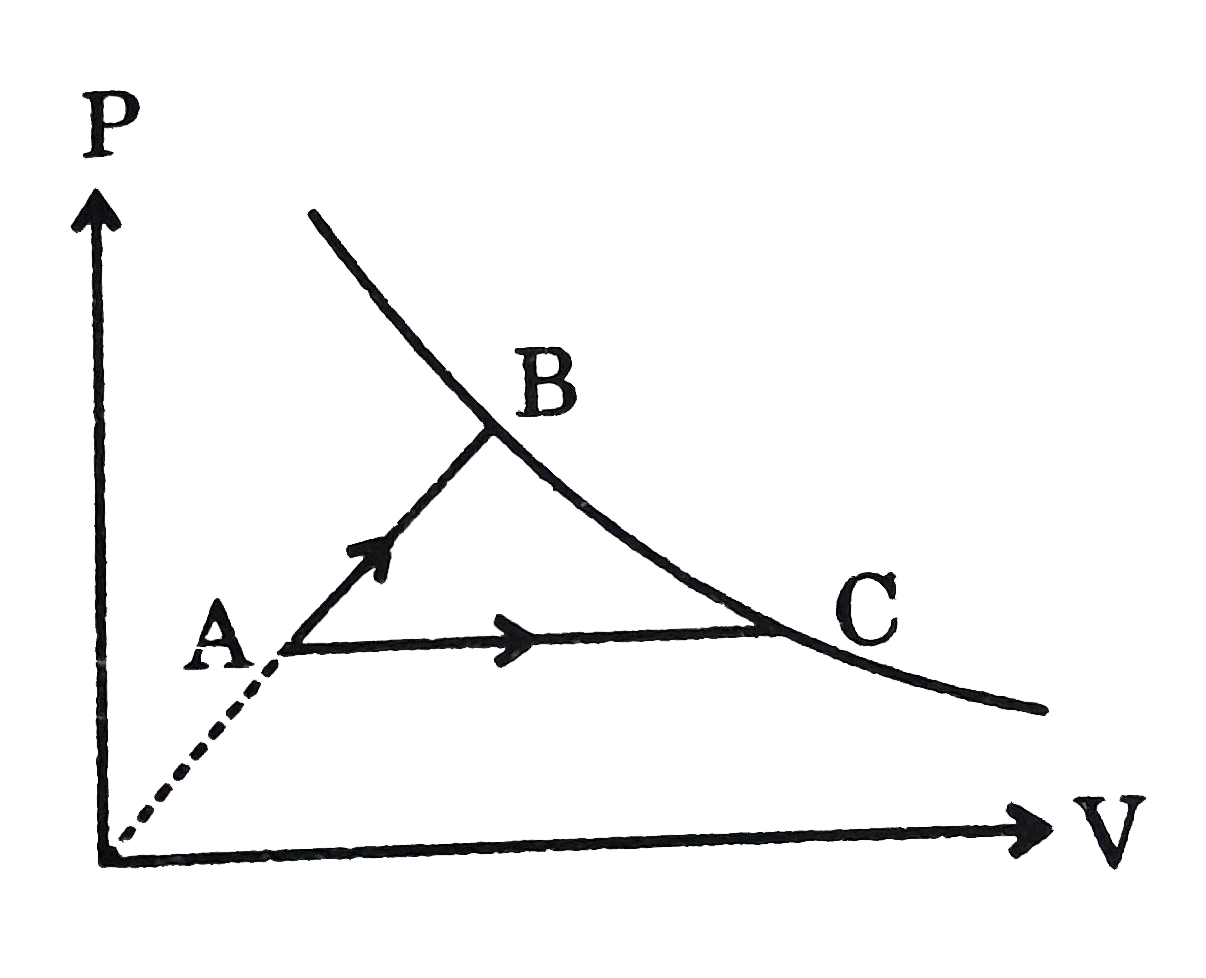 Aheat absorbed by the system will be more in AB process.Bheat absorbed by the system will be more in AC processCheat absorbed by the system will be same in AB and AC processDNone of the above
Aheat absorbed by the system will be more in AB process.Bheat absorbed by the system will be more in AC processCheat absorbed by the system will be same in AB and AC processDNone of the above - Question 3 - Select One or More

An ideal gas takes part in two thermal process in which it is heated from same initial state A. Once it is taken from A to B and in the other case from A to C. The points B and C lie on an isotherm. Choose the correct options.AChange in internal energy for both the process is the same.Bthe heat supplied to gas in A→B is greater than that in A→C.CThe heat supplied to gas in A→B is less than that is A→C.DThe work done by the gas in A→B is equal to than that in A→C
The straight lines in the figure depict the variations in temperature ΔT as a function of the amount of heat supplied Q is different process involving the change of state of a monoatomic and a diatomic ideal gas . The initial states, (P,V,T) of the two gases are the same . Match the processes as described, with the straight lines in the graph as numbered.
_E01_155_Q01.png)
Column-IColumn-II(A)Isobaric process of monoatomic gas.(p)1(B)Isobaric process of diatomic gas(q)2(C)Isochoric process of monoatomic gas(r)Minimum at section B(D)Isochoric process of diatomic gas(s)x-axis (i.e.'Q' axis)View Solutionconsider two processes on a system on a system as shown in
the volumes in the initial states are the same in the two processes and the volume in the final states are also the same.Let ΔW1andΔW2 be the work done by the sustem in the processes A and B respectively.
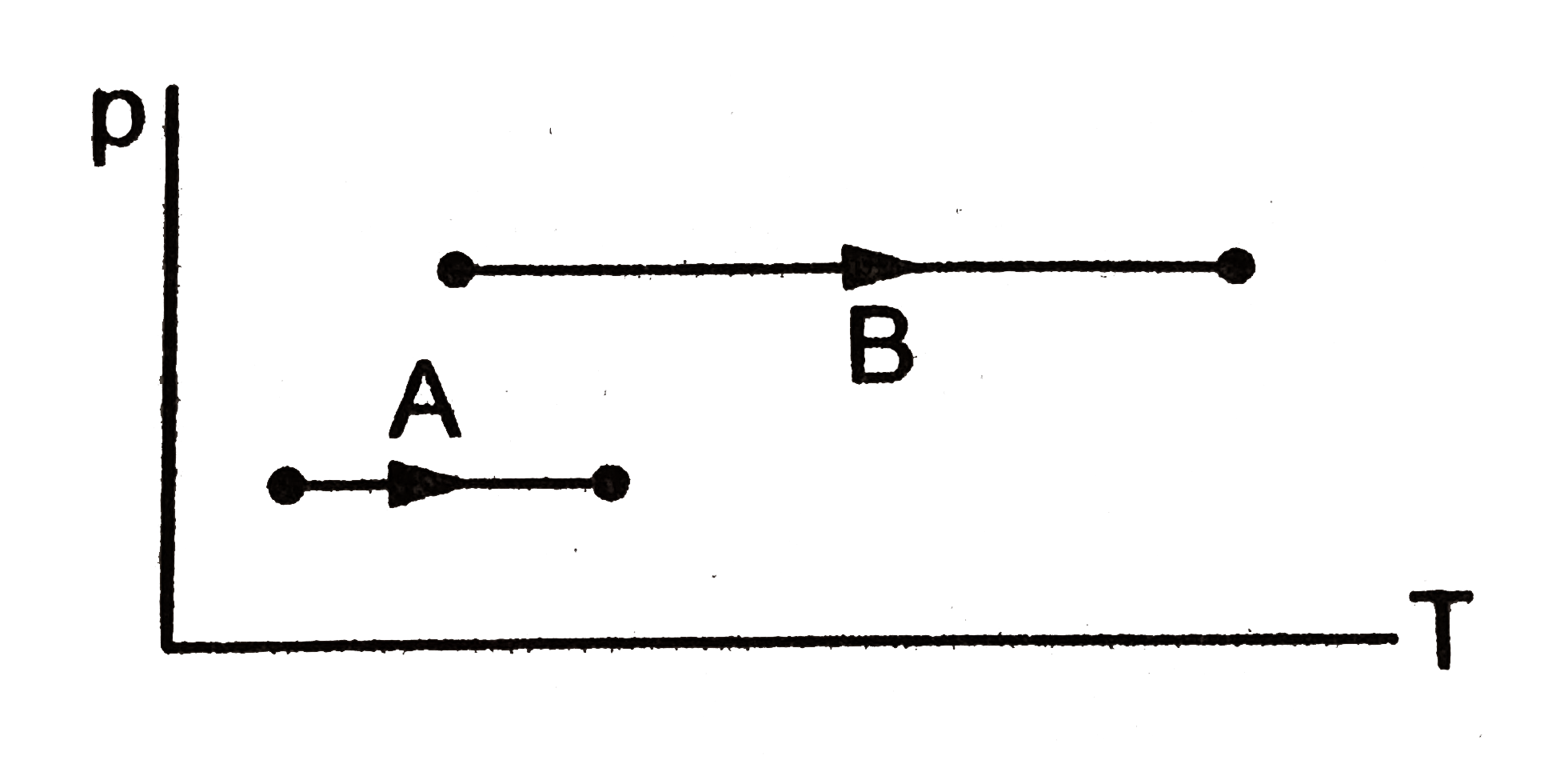 View Solution
View SolutionConsider two processes on a system as shown in figure.
The volumes in the initial states are the same in the two processes and the volume in the final states are also the same.Let ΔW1 and ΔW2 be the work done by the system in the processes A and B respectively.
 View Solution
View SolutionA cyclic process is shown on the P-T diagram. Which of the curve shown the same process on a V-T diagram?
 View Solution
View SolutionConsider the two process on a system as shown in figure. The volumes in the initial state and in the final state are the same in the two process A and B. If W1 and W2 be the work done by the system in the processes A and B respectively then-
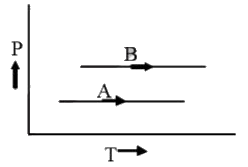 View Solution
View Solution


